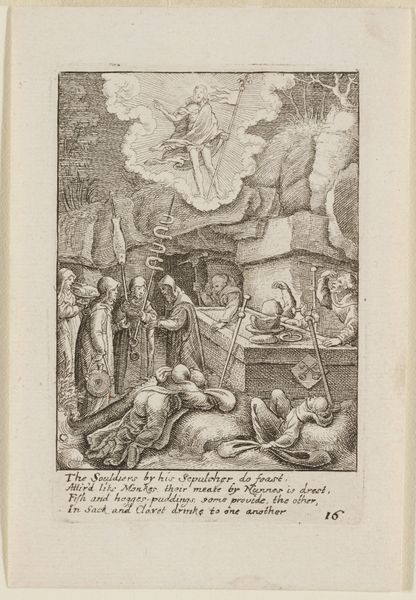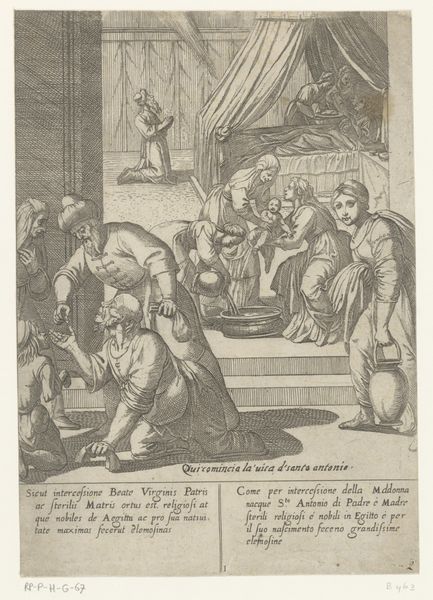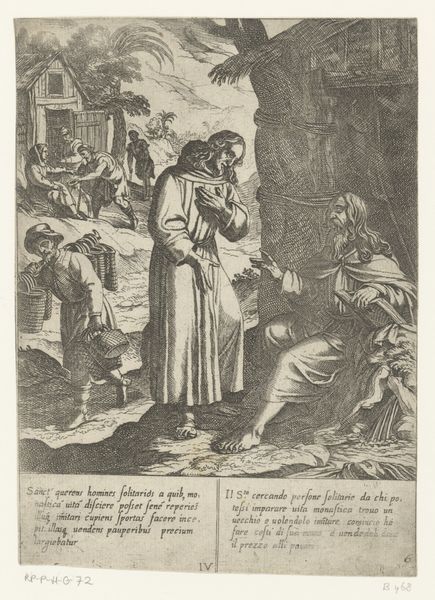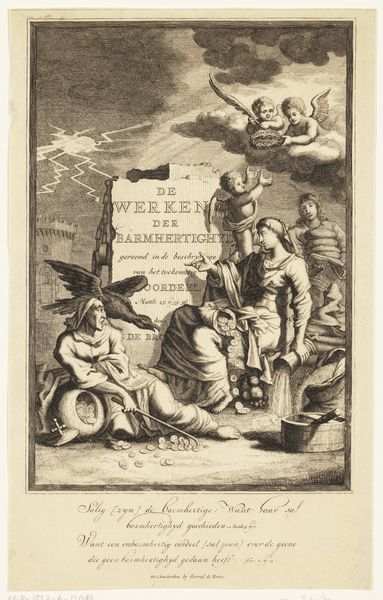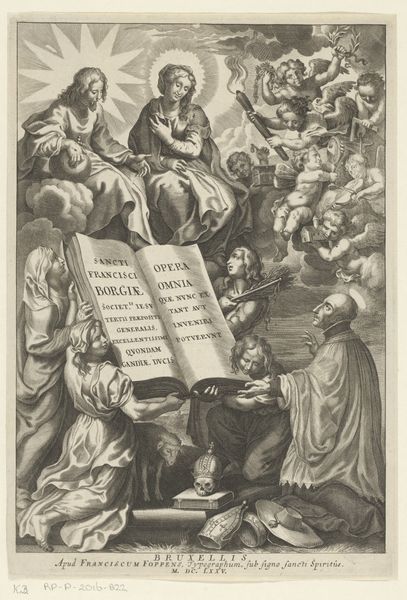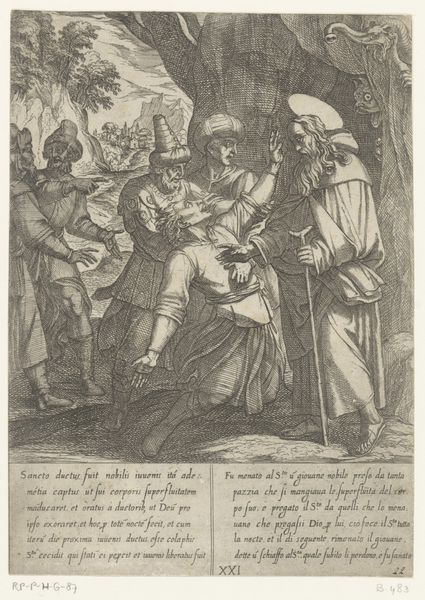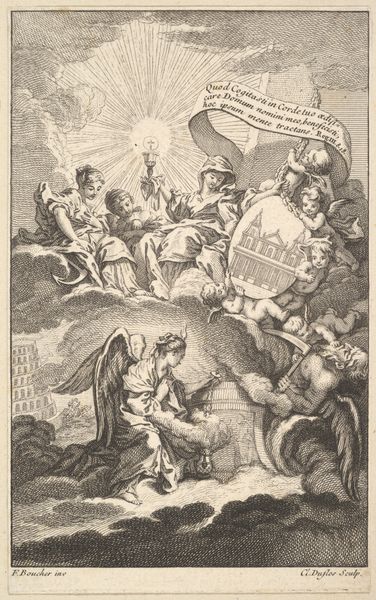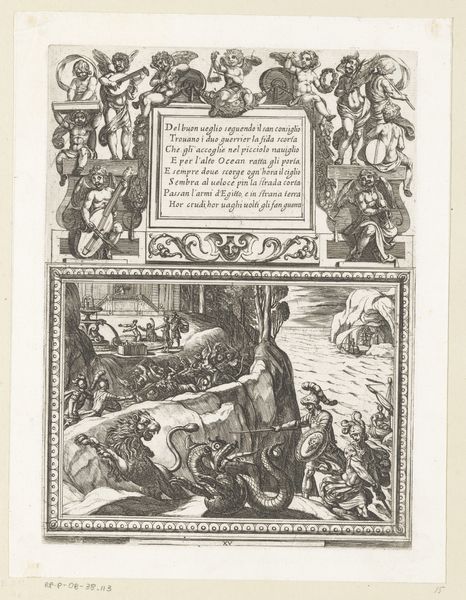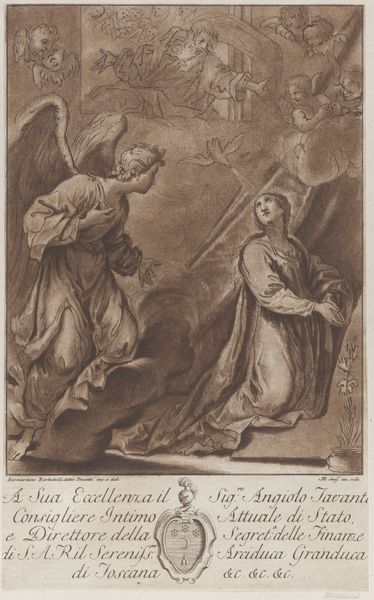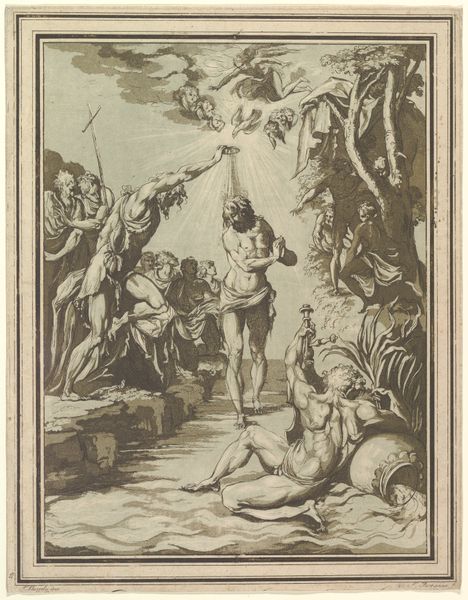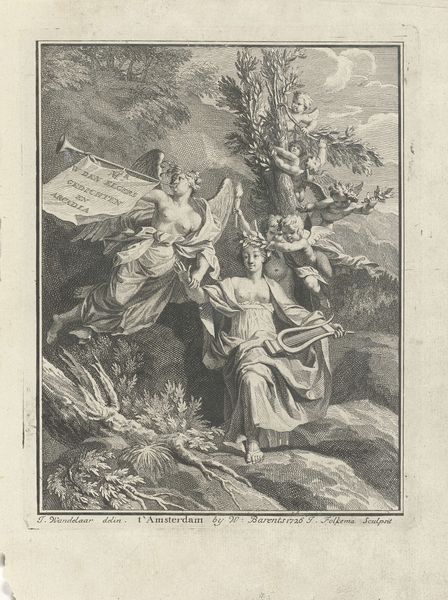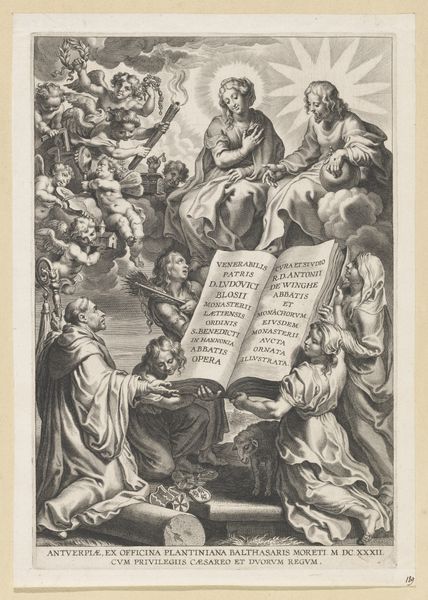
print, engraving
#
allegory
#
baroque
# print
#
old engraving style
#
engraving
Dimensions: height 146 mm, width 92 mm
Copyright: Rijks Museum: Open Domain
Curator: The work before us, created circa 1670, is entitled "Jakobs ladder." This baroque engraving presents an allegorical scene, and we believe it's attributed to Michiel Cnobbert, produced for Joachim a Metelen in Antwerp. Editor: It's strikingly stark. The figures are rendered with a fineness of line that gives a sense of gravity to this biblical subject, though that heaviness does somewhat flatten out the emotional range. Curator: Indeed, this particular visual representation of Jacob's Ladder fits within a tradition of religious imagery used to reinforce spiritual concepts for public audiences. The iconography adheres to established pictorial traditions and religious interpretations prevalent at the time. Note how the engraving places the scene in an easily understandable visual language accessible to a broad spectrum of viewers. Editor: And what’s key is how the materiality and method underpin that intention. An engraving allows for mass production and dispersal. This accessibility would, crucially, determine the audiences engaging with this imagery. It underscores how printmaking, in a sense, democratized spiritual access during this time. We’re witnessing not just the dissemination of religious ideas, but their commodification too. Curator: The engraving, by being readily reproducible, ensured that a wider demographic was exposed to this representation. By having the producer, Cnobbert, and commissioner, Metelen, named within the work we can gather it was meant to associate these concepts with influential individuals and Antwerp as a center of publishing during the period. It is worth mentioning that at the time there were also different translations or “adaptations” by Ioannes Lindeborn and Adrianus ter Low who are also acknowledged as influencers. Editor: That's a shrewd observation, pointing towards the nuanced collaboration between religious ideology, labor practices, and a proto-mass market for images. So we should understand "Jakobs Ladder" as more than a representation of faith, but an articulation of power relations as well. Curator: Precisely, it is the entanglement of such relationships, that underscores the meaning of works like this one for those contemporary viewers who saw it, or for us today. Editor: The materials, methods, and networks involved offer rich context and the politics through which religious narrative finds material form.
Comments
No comments
Be the first to comment and join the conversation on the ultimate creative platform.
